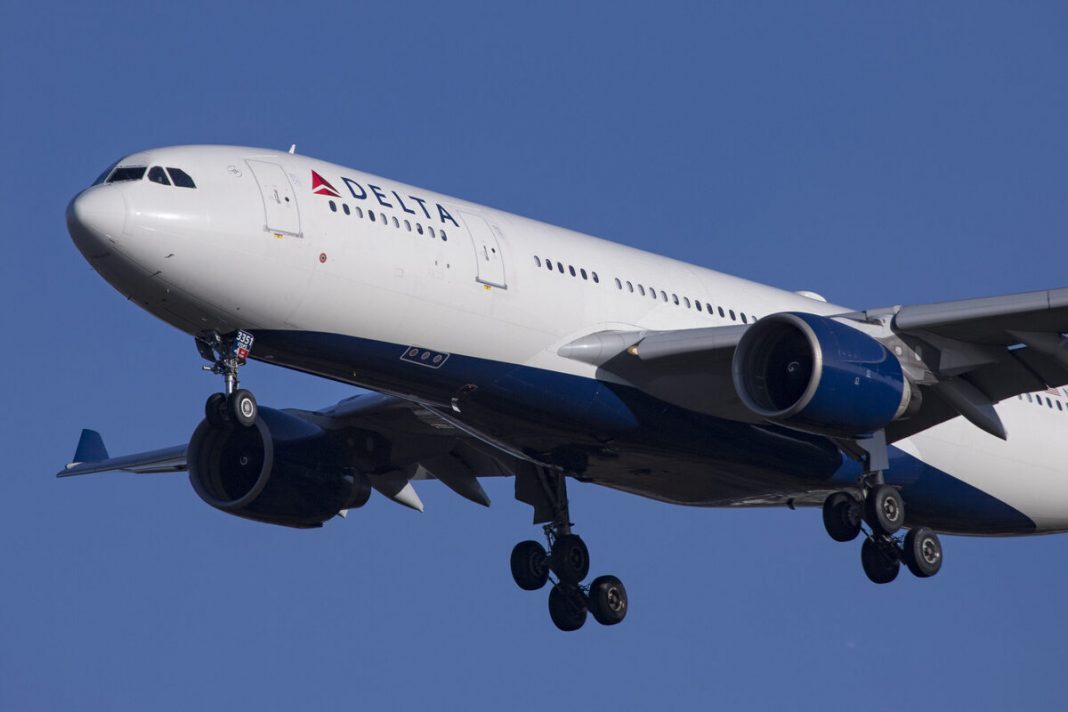A Delta Air Lines Airbus A330 had to divert to Iceland over engine troubles early in the morning on Monday. The aircraft is on the ground in Iceland undergoing an engine replacement, after which it will be able to resume commercial services. Delta’s Airbus A330s are powered using Pratt & Whitney engines.

Delta Airbus A330-300 diverts to Iceland
According to the Aviation Herald, a Delta Air Lines Airbus A330-300 operating from New York to Paris on Monday, December 28th, faced an engine issue inflight and decided to divert to Iceland. Flight DL262 landed safely in Iceland just under six hours after departing New York. The aircraft had departed on Sunday, December 27th, in the night heading to Europe.
Oceanic Control approved the diversion within a minute of the crew requesting to diver to Iceland over the issue. However, the descent took some time due to a significant amount of overnight transatlantic traffic heading to Europe.

About two hours after the crew decided to divert, they brought the plane on the ground safely at Reykjavik’s Keflavik Airport.
All 96 passengers had to be accommodated on another flight. So, Delta pulled an Airbus A330-900neo, registered as N401DZ, to fly from Amsterdam (AMS) to Reykjavik and fly the passengers and cargo from Iceland to Paris. The aircraft then positioned back to New York-JFK, where it will reenter scheduled commercial operations with a flight to Tel Aviv (TLV), one of the newest of Delta’s Airbus A330-900neo destinations.

Delta issued the following statement to Simple Flying on the diversion:
“Our flight crew followed established procedures to divert to KEF. Delta teams dispatched a new aircraft from our Amsterdam hub to bring our customers to Paris from Keflavik. Nothing is more important than the safety of our customers and crew and Delta has apologized to our customers for the delay in their travel plans”
The aircraft
The plane that operated the flight is registered as N810NW. According to data from Flightradar24, the plane is 15 years old. All of Delta’s Airbus A330-300s seat 293 passengers. This includes 34 in Delta One, 40 in Comfort+, and 219 in economy.
The Airbus A330s in Delta’s fleet are outfitted with Pratt & Whitney PW4168A engines. These engines were developed specifically for the Airbus A330 and have been powering those planes reliably since the 1990s.

It is unclear what exactly the issue was with the engine, but pilots do not take the decision to divert lightly. Diversions come with plenty of logistical headaches to take care of, such as re-accommodating passengers, repairing the aircraft, and getting it back to a home base where it can reenter service. With fewer scheduled flights these days, it is less of an issue for Delta to have to manage cancellations and other operational headaches, but it still is an unexpected occurrence.
The route and diversion
Delta Air Lines routinely flies between New York’s John F. Kennedy International Airport (JFK) and Paris Charles de Gaulle Airport (CDG), where partner Air France maintains a hub. Delta routinely does fly Airbus A330s from its hubs, such as Atlanta (ATL) and JFK to Paris, as the planes are well-suited for transatlantic long-haul operations.
Delta does have some familiarity with Reykjavik. The airline operates summer seasonal flights to Iceland when there is more tourism demand. Right now, during winter, Delta has suspended operations to Iceland.
Delta’s European operations are also significantly reduced amid the current crisis. Due to a lack of demand for international flying and also strict border restrictions, fewer passengers are looking to cross the Atlantic right now.
Were you onboard this flight? What was your experience? Let us know in the comments!
[ad_2]
Source link


